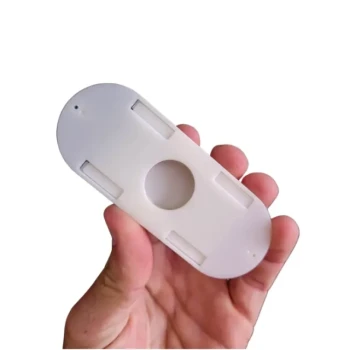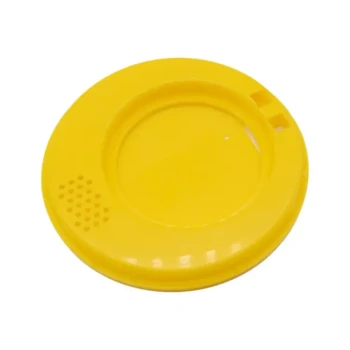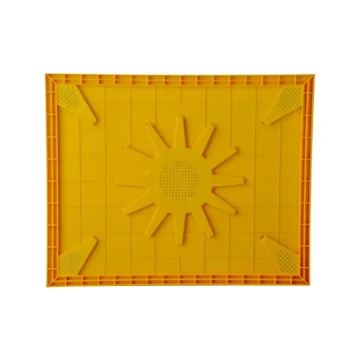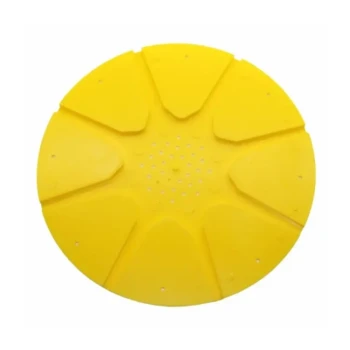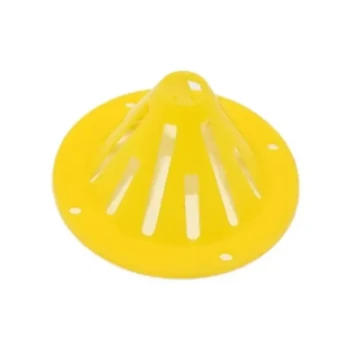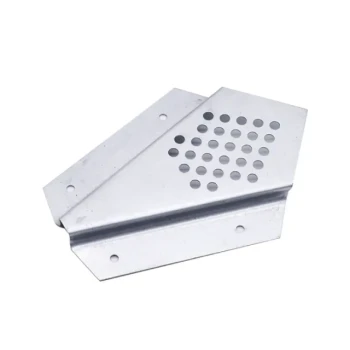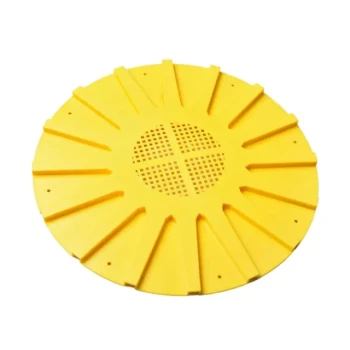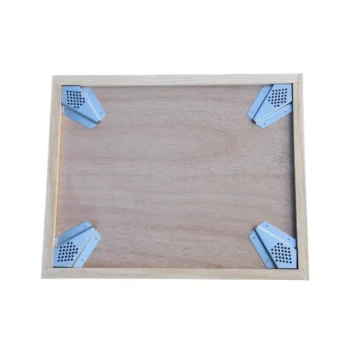At its core, a bee escape is a one-way gate for bees. It is a simple device, typically installed in the hole of an inner cover, that is placed between the honey supers and the brood boxes of a hive. This device allows bees to move down out of the honey storage area but prevents them from finding their way back in, methodically and gently clearing the supers for harvest.
A bee escape leverages the natural movement of bees within a hive to achieve a slow, calm, and low-stress clearing of honey supers. It is not an instant solution but is arguably the most bee-friendly method for preparing a hive for honey extraction.
The Principle Behind the One-Way Door
To use a bee escape effectively, you must understand both its simple mechanics and the bee behavior it exploits. It works with the bees, not against them.
How a Bee Escape Works
Most bee escapes, like the common Porter bee escape, are small plastic or metal devices with a set of delicate, spring-loaded gates. Bees moving down from the honey super can easily push through these one-way springs.
However, when they attempt to return, they are met with a flat surface and a tiny, hard-to-find entry point. The vast majority of bees cannot solve this puzzle and remain in the lower part of the hive.
Why Bees Leave the Honey Super
Bees naturally travel between the upper honey supers and the lower brood chamber. They do this to tend to the queen, feed the brood, and regulate the hive's temperature.
The bee escape allows this downward movement to continue unimpeded. Over a period of 24 to 48 hours, the natural traffic of the hive will voluntarily move the population out of the supers, leaving them nearly empty and ready for removal.
A Practical Guide to Using a Bee Escape
Proper installation is critical for the device to function. A single mistake can render the entire process ineffective.
Step 1: Confirm No Brood in Supers
A bee escape will not work if there is brood (eggs, larvae, or pupae) in the honey supers you wish to clear. Nurse bees will not abandon the brood, no matter the obstacle. Ensure a queen excluder has kept the queen in the boxes below.
Step 2: Install the Bee Escape Board
The bee escape device is mounted onto a solid board, most commonly an inner cover. This "escape board" is then placed directly underneath the honey supers you plan to harvest and on top of the brood boxes.
The escape should be oriented so the bees can exit down into the main hive body.
Step 3: Seal All Other Exits
This step is crucial. You must ensure there are no other cracks, holes, or gaps in the honey supers being cleared. Any alternative entrance will become a new front door for bees to re-enter, defeating the purpose of the one-way gate.
Step 4: Wait Patiently
The process requires time. It typically takes 24 to 48 hours for the vast majority of bees to clear out. The reference notes it can sometimes take longer, from 3 to 5 days, depending on weather and hive temperament. Do not rush the process.
Understanding the Trade-offs and Common Pitfalls
While effective, the bee escape is not a perfect solution for every situation. Understanding its limitations is key to success.
The Major Trade-off: Time
The biggest downside is the time commitment. Unlike using a bee brush or fume board, which clears bees in minutes, a bee escape requires you to plan your harvest at least one to two days in advance.
Risk of Blockages
The escape's exit tunnels are very small. As the reference suggests for small entrances, these can become clogged with debris or a dead bee. Always check that the escape's moving parts are functional and clear before installation.
Ineffective in Cold Weather
Bees are less active and cluster for warmth in colder temperatures. A bee escape is far less effective in cold weather, as the bees are not moving between the supers and brood chamber as frequently.
Drone and Queen Complications
Large drones can sometimes get stuck in the escape's narrow passages, creating a blockage. It is also critical to ensure the queen is not trapped above the escape board, as the hive will not abandon her.
Making the Right Choice for Your Harvest
A bee escape is an excellent tool, but its value depends entirely on your goals and beekeeping style.
- If your primary focus is a calm, gentle harvest: The bee escape is the ideal method, as it causes minimal disruption and stress to the colony.
- If your primary focus is speed and efficiency: A fume board or bee blower will clear supers much faster, which is often necessary for commercial operations with many hives.
- If you are a hobbyist with a few hives: The bee escape is a fantastic, low-stress tool that makes the harvesting experience more enjoyable and less frantic.
By understanding the simple principle of the one-way door, you can make honey harvesting a peaceful and effective process for both you and your bees.
Summary Table:
| Feature | Description |
|---|---|
| Core Principle | One-way gate that allows bees to exit honey supers but not return |
| Key Benefit | Calm, low-stress method for clearing bees from honey frames |
| Typical Timeframe | 24 to 48 hours for effective clearing |
| Best For | Beekeepers prioritizing gentle, bee-friendly harvesting |
| Main Limitation | Requires advance planning; not an instant solution |
Ready for a Calmer, More Efficient Harvest?
A bee escape is just one piece of the puzzle for successful beekeeping. For commercial apiaries and distributors, having reliable, high-quality equipment is essential for every stage of the process.
HONESTBEE supplies the durable beekeeping supplies and equipment you need to operate smoothly and profitably. From honey extraction tools to protective gear, we support your wholesale-focused operations with dependable products.
Let's discuss how we can equip your business for success. Contact our team today to learn more about our wholesale offerings.
Visual Guide
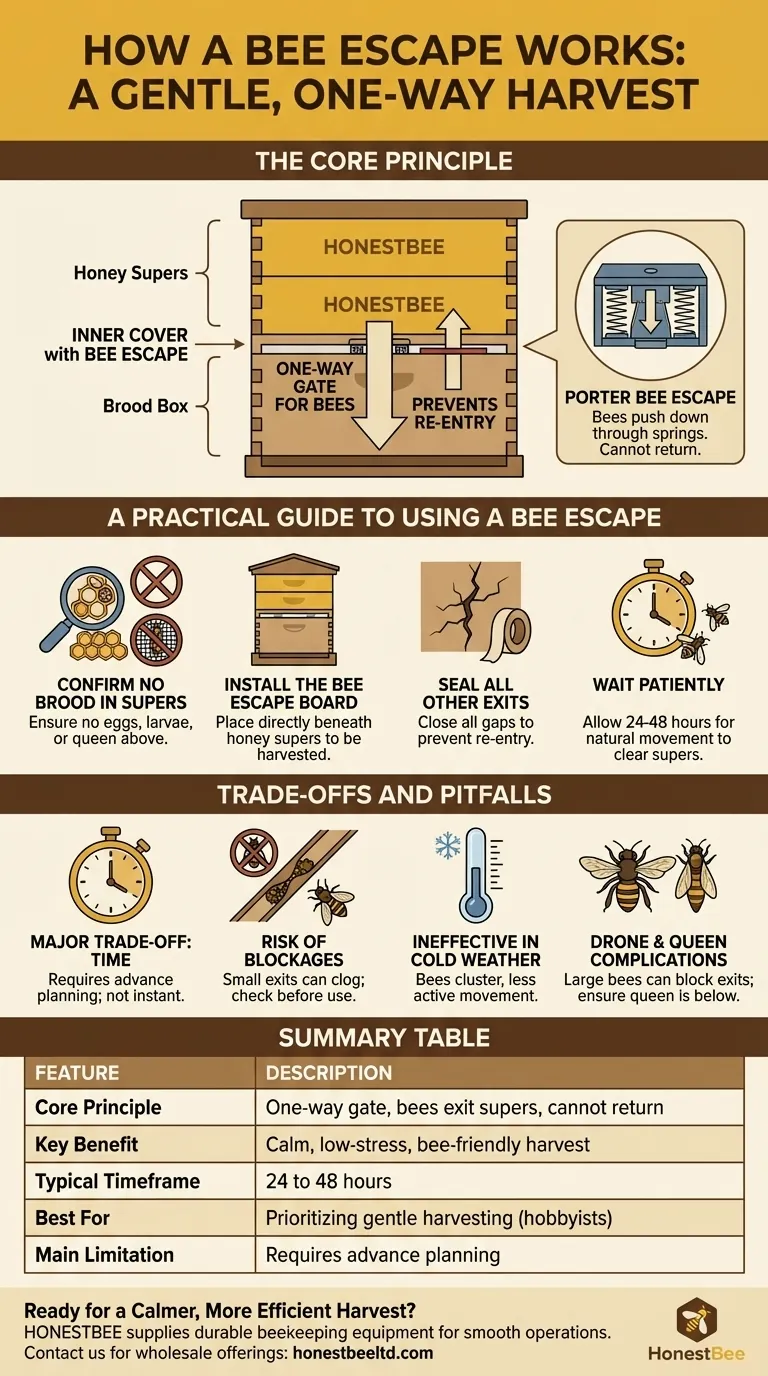
Related Products
- Professional Durable Two-Piece Plastic Bee Escape
- Circular Labyrinth Bee Escape for Efficient Hive Management
- High-Efficiency Diamond Maze Bee Escape for Clearing Supers
- HONESTBEE Multi Exit Plastic Bee Escape Board for Efficient Honey Harvesting
- Efficient Hive Clearing: HONESTBEE 8-Way Plastic Bee Escape
People Also Ask
- What is a bee escape and why is it used in beekeeping? A Guide to Gentle Honey Harvesting
- What is a bee escape board and how does it help in harvesting honey? A Gentle, Chemical-Free Harvesting Solution
- How is a bee escape board used in a hive? A Simple Guide to a Calm, Chemical-Free Honey Harvest
- How can bees be cleared off honey supers in a Langstroth hive? Use a Gentle Bee Escape
- What is the method of separating bees from honey supers using the Bee Escape Board? A Gentle, Low-Stress Harvesting Guide
